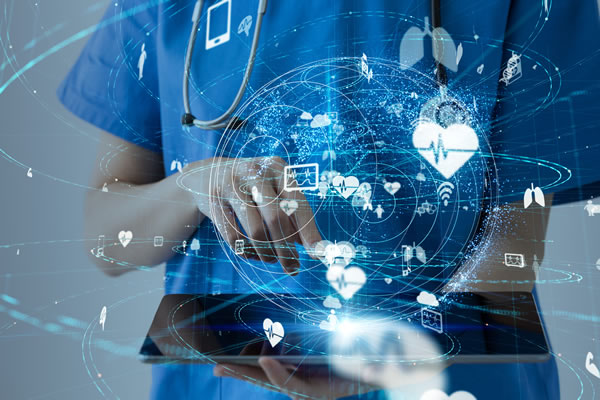The Internet of Things (IoT) has been paramount in addressing the unprecedented challenges of COVID-19. The pandemic spread quickly, forcing medical professionals to re-examine their current technology and adjust existing solutions to fit both their and their patients’ evolving needs.
Flexible and simple deployment advantages make smart sensors the ideal technology to connect a wide range of applications within a hospital or another medical facility to support compliance and address key needs. Semtech’s LoRa devices and the LoRaWAN protocol are examples of a flexible, easy-to-deploy and affordable IoT technology being used to balance health and safety concerns.
Focus on Contact Tracing
One technology that saw a major surge following the start of the pandemic is contact tracing. Countries like South Korea have implemented wide-scale programs to understand and trace the pandemic’s spread more deeply. Contact tracing is closely tied to proximity tracing and provides visibility into the individuals who have come into close contact with someone who’s tested positive. By identifying these individuals quickly, those impacted can immediately quarantine, helping the overall goal of flattening the curve.
These solutions, which are experiencing rapid deployment, come in two distinct types: smartphone-based apps or wearables.
Smartphone-based solutions use personal cellular devices to monitor interactions and offer device alerts when individuals are too close. There are a few drawbacks and concerns to consider when implementing smartphones for contact tracing. Firstly, not all medical staff have smartphones or are allowed to carry phones during work.
These applications are expensive to develop and maintain for the mobile market and non-technical employees may struggle to download and configure the app. There are also often user concerns related to privacy and how the information gathered by smartphone contact tracing applications will be used. This can result in lower adoption in both medical and non-medical settings, significantly impacting the value of the data collected.
Wearables offer a much more secure alternative to smartphone apps. These devices only need to be worn in a work setting as a lanyard or wristband. They are easy to distribute, simple, cost-effective to manufacture and are effortless to use for non-technical personnel. Because they aren’t tied to a person’s own cellphone device, there’s no risk to their personal data. Utilizing LoRaWAN’s private network deployment model can offer further reassurance by limiting data collection to those periods when the user is exposed in the hospital or other medical settings.
Other Health and Safety Measures
In addition to contact tracing, long range, low-power technology enables a range of applications to provide optimal patient care and frontline worker safety. Other applications include:
- Touchless Check-in: Connected devices enable automated registration and pre-screening processes.
- Predictive Cleaning: Smart solutions monitor and record traffic and usage data in designated high-use areas, such as emergency rooms and hospital hallways. When the device reaches the predefined thresholds, the facility management team receives alerts to augment regularly scheduled cleaning practices enabling cleaner work environments for both patients and medical teams.
- Indoor Air Quality: Solutions that help ensure ventilation systems operate correctly and provide acceptable air quality in hospital spaces are crucial to curbing the spread of infectious diseases. These sensors measure real-time temperature, humidity and CO2 levels to trigger increased and safer ventilation rates.
- Occupancy Monitoring: Devices that identify how spaces are utilized and provide historical data to inform decisions can help maintain social distancing measures such as space between patient beds.
- Health Wearables: Wearable devices monitor biometric data, taking some of the guesswork out of health and wellness monitoring, allows individuals and healthcare workers to utilize resources better and drive greater efficiencies.
- Infrared Temperature Sensors: Smart human body temperature monitoring products enable healthcare workers to screen individuals with a high temperature quickly.
The healthcare industry is facing serious challenges as a result of the pandemic. Smart sensing solutions will continue to evolve to help mitigate the current risks COVID-19 presents and any that may come in the future. Removing uncertainties through monitoring and tracking applications, such as contact tracing, footfall traffic detection, and proximity sensing, create safer environments and bring peace of mind to workers and patients alike.
















Comments are closed.